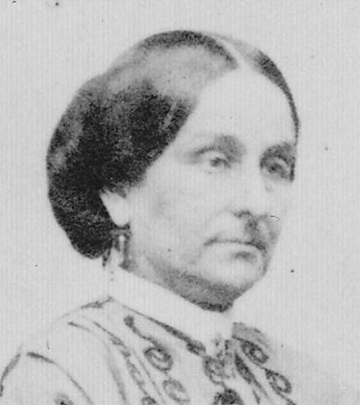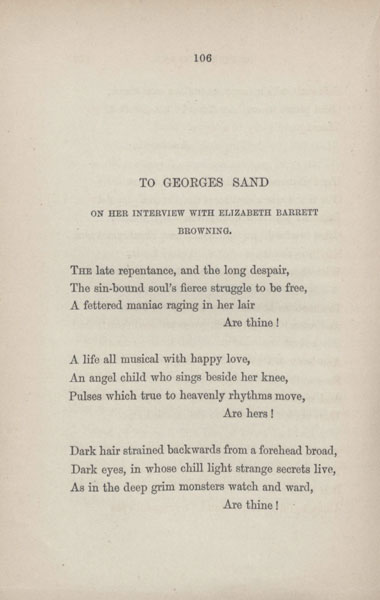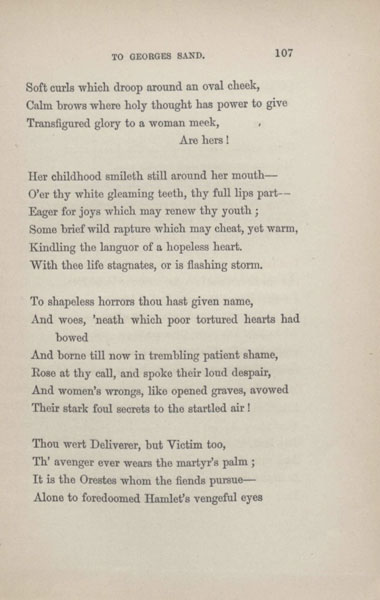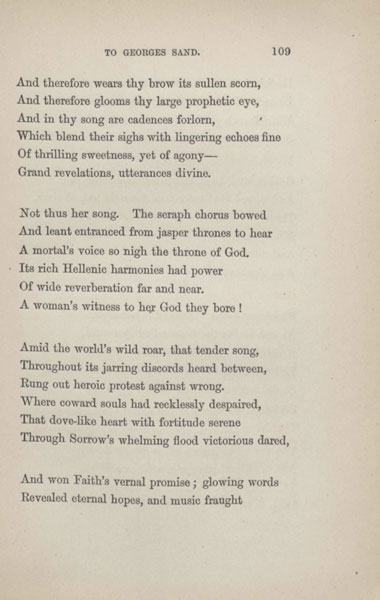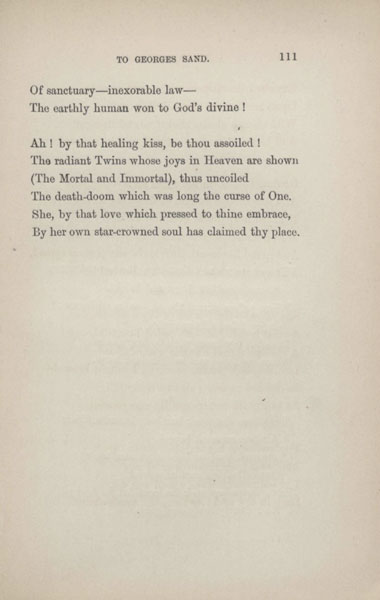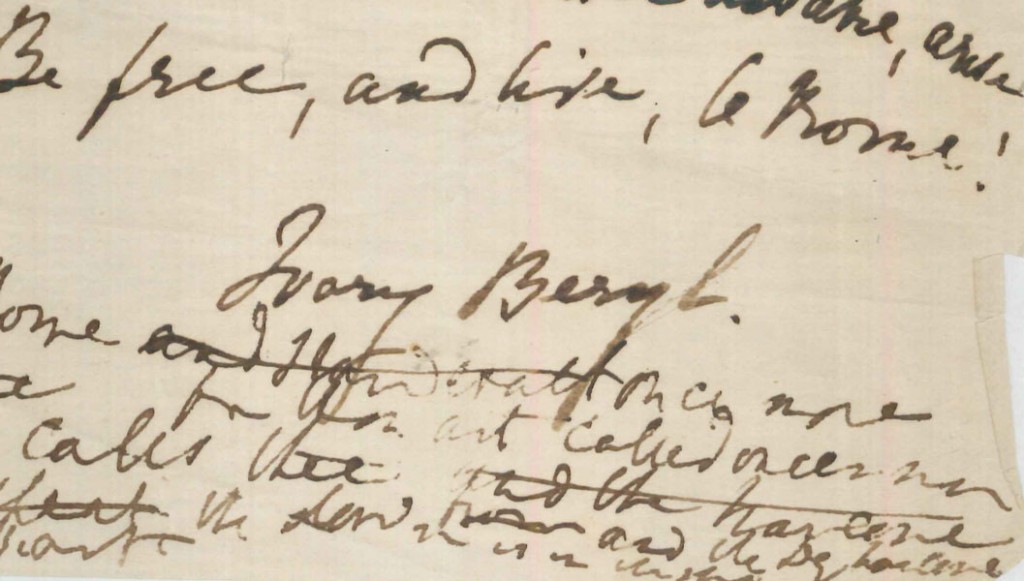Isabella Blagden
“To Georges Sand:
On Her Interview With Elizabeth Barrett Browning”
Poems (1873)
The poem above was inspired by the meeting of the nineteenth century poet, Elizabeth Barrett Browning, and nineteenth century novelist, George Sand, in Paris in 1852. Both Blagden and Barrett Browning admired George Sand for her unconventional private life and the frank sexuality of her novels. Barrett Browning also wrote poems honoring George Sand. The following poems appeared in her two volumes of Poems, published in 1844.
THOU large-brained woman and large-hearted man,
Self-called George Sand! whose soul, amid the lions
Of thy tumultuous senses, moans defiance
And answers roar for roar, as spirits can!
I would some mild miraculous thunder ran
Above the applauded circus, in appliance
Of thine own nobler nature’s strength and science,
Drawing two pinions, white as wings of swan,
From thy strong shoulders, to amaze the place
With holier light! that thou to woman’s claim
And man’s, mightst join beside the angel’s grace
Of a pure genius sanctified from blame , —
Till child and maiden pressed to thine embrace,
To kiss upon thy lips a stainless fame.Elizabeth Barrett Browning
“George Sand: A Desire”
Poems (1844)TRUE genius, but true woman! dost deny
Thy woman’s nature with a manly scorn,
And break away the gauds and armlets worn
By weaker women in captivity?
Ah, vain denial! that revolted cry
Is sobbed in by a woman’s voice forlorn!—
Thy woman’s hair, my sister, all unshorn,
Floats back dishevelled strength in agony,
Disproving thy man’s name! and while before
The world thou burnest in a poet-fire,
We see thy woman-heart beat evermore
Through the large flame. Beat purer, heart, and higher,
Till God unsex thee on the spirit-shore;
To which alone unsexing, purely aspire.Elizabeth Barrett Browning
“George Sand: A Recognition”
Poems (1844)
Isabella Blagden was a dear friend of the Brownings and a central figure in the Anglo-Florentine community. Although originally little was known about Isa’s birthplace, parents, relatives, and early life, recent research by Philip Kelley, Scott Lewis, and Edward Hagan, published in The Brownings’ Correspondence, Vol. 16, has provided many details about her early life. The uncertainty over the year of her birth arises from different information given on her grave marker and death certificate. With Elizabeth Barrett Browning’s encouragement, Isa wrote five novels, Agnes Tremorne, being the most well known. The Armstrong Browning Library has an extensive archive of Isa Blagden’s writing, including three books, twelve manuscripts, and 124 letters written to or by her. Robert Browning’s letters to Isa Blagden were first collected in a volume edited by E. C. McAleer entitled Dearest Isa (1951). Most recently the letters were published in Florentine Friends: The Letters of Elizabeth Barrett Browning and Robert Browning to Isa Blagden, 1859-1861, edited by Philip Kelley and Sandra Donaldson (2009).
Isa almost always published under a pseudonym. Although she requested that her novel, Agnes Tremorne (1861), be published under the pseudonym Ivory Beryl, the publisher substituted her real name. The poem “Voices: Youth, Love and Death” in the Victoria Regia (1861) is the only one of her publications signed “Isa Blagden.” The manuscripts of “A Roman Picture” below illustrate Isabella Blagden’s pseudonyms, “I.B.” and “Ivory Beryl.”
Isabella Blagden
“A Roman Picture” (undated)
Isa Blagden died in the Villa Castellani, Piazza di Bellosguardo, Florence, on 20 January 1873 and was buried on 28 January near her friend, Elizabeth Barrett Browning, in the Protestant Cemetery.

